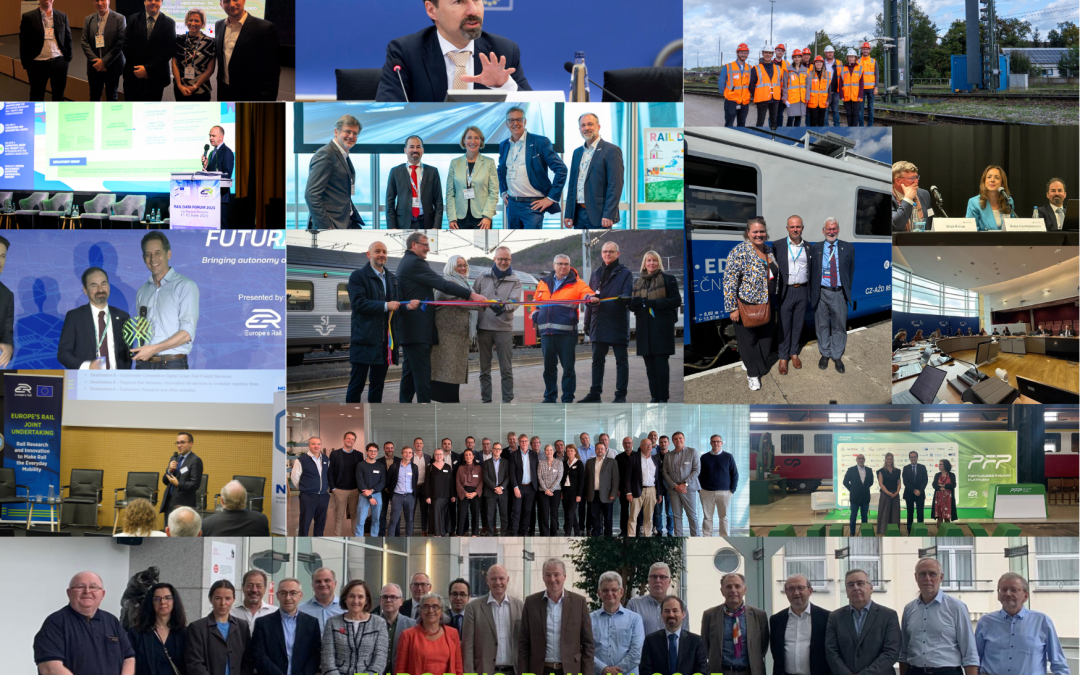2025 saw Europe’s Rail (EU-Rail) make significant progress across multiple initiatives, fostering partnerships and...

This report is the deliverable of Task 17.1 “Requirements Specification for Automated Decisions and Decision Support for Traffic Management Optimization” of the Flagship Project 1 – “Network management planning and control & Mobility Management in a multimodal environment and digital enablers” of the EU-MAWP. The aim of this work package is to specify European standardized requirements for a system to provide automated decisions and decision support for traffic management optimization.
The main results contained in this document are specified functional, non-functional, and operational requirements that have been agreed upon between all partners involved in the work package. These requirements were developed with a view towards both technical enablers associated with Work Package 17: Technical Enabler 16 “Automation of very short-term train control decisions” as well as Technical Enabler 17 “Real-time conflict detection and resolution for main line and optimization”. The implementation of these technical enablers represents a stepping-stone towards the development of an overall general level system. The requirements delivered here were developed with a focus on the demonstrators developed in Work Package 18. The whole product requirements have only been mentioned and defined where they are needed to understand the setting and scope of the demonstrators’ requirements. The requirements specification for the final product will be developed within the next ERJU calls. The European standardization of the requirements delivered here supports the System Pillar in achieving the interoperability of the European railway networks by 2031. In the last chapter of this report, we provide benchmarking criterion for the development of a testbed for the standardized testing and comparison of methods developed in later stages of the work package.
The requirements delivered in this report are further classified into the following classes and sub-classes:
These requirements were obtained systematically through the collaboration of three groups of industrial and infrastructure partners: an Author Group, an Expert Group, and a Review Group. The delivered requirements are the result of an iterative querying of the Expert Group by the Author Group using specially designed requirements questionnaires. Subsequent phases of the deliverable were quality controlled by the Review Group – consisting of EU-wide and cross-industry representatives.
Overall, more than 80 requirements have been developed. A special focus has been put on the system scope, the integration into the existing IT-infrastructure and processes, conflict detection, and conflict resolution and mitigation. To reflect the differences in the technical enablers, requirements for Technical Enabler 16 and Technical Enabler 17 were developed separately.
The results of this document are the basis for the later stages of Work Package 17, in which methods for automated decisions and decision support for traffic management optimization are developed on a demonstrator level. Furthermore, these results feed into the subsequent Work Package 18, in which systems with a higher maturity level incorporating Technical Enabler 16 and Technical Enabler 17 are to be developed. There is also a symbiotic interaction between Work Package 17 and Work Package 10: In Work Package 10 high-level requirements and specifications for both technical enablers were developed, which were taken as input here. In turn, the standardized requirements contained in this report will be taken as inputs into Task 10.2 of Work Package 10, in which specifications for high-level Use Cases and demonstrators of Work Packages 11-17 will be developed. The developments of Work Package 17 are also interacting for Work Package 2, which is responsible for technical coordination.